Property Tax Cap: Does Your State Have One?
Does your state have a property tax cap? Here’s what you need to know about increasing tax bills in all 50 states.


A property tax cap could help keep your property tax bill from increasing too much. That’s because these caps limit how much property taxes can increase from one period to the next. However, not all states have a property tax cap, and not all cap types are created equal. There is more than one type of property tax limit, and other factors play a role in tax bill amounts. Here’s what you need to know.
[Median property tax bills, home values, and effective tax rates are based on data provided by the US Census Bureau and presented by PropertyShark. The types of property tax limitations each state imposes are based on information from the Tax Foundation.]
Types of property tax caps
Each type of property tax cap can help prevent tax bills from spiking, but they are all very different.
- An assessment limit sets a cap for how much the assessed value of your property can increase from one period to the next. (For example, an assessment limit might not allow your home’s assessment to increase by more than 3%, even if the property’s market value increases by 20%.)
- A rate limit sets a cap for the rate at which a jurisdiction can tax your property. This limit can help keep your tax bill from increasing when there hasn’t been a change to your property’s assessment.
- A levy limit caps how much property tax revenue a government can collect. The levy limit refers to all revenue, not only the revenue from one property.

Property tax rate in Alabama
Assessment limit: No
Rate limit: Yes
Levy limit: Yes
Median property tax bill: $646
Alabama’s property tax rate and levy limits contribute to the state’s property tax bill amounts, which are among the lowest in the country, according to U.S. Census Bureau data. However, there is no property tax assessment cap in Alabama, which means when your property’s market value increases, so will your property tax bill.

How much are property taxes in Alaska?
Assessment limit: No
Rate limit: Yes
Levy limit: Yes
Median property tax bill: $3,464
Alaska has a generally high property tax burden, despite the existence of rate and levy limits on real property. However, property tax bills can vary drastically within the state. For example, the average property tax levy is more than $3,500 in Anchorage, compared to $678 in the Hoonah-Angoon Census area.
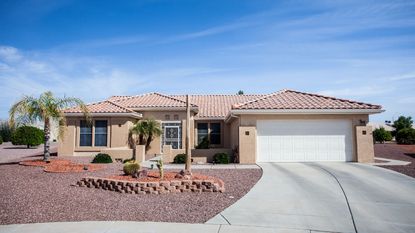
Property tax changes for Arizona
Assessment limit: Yes
Rate limit: Yes
Levy limit: Yes
Median property tax bill: $1,648
Arizona imposes all three types of property tax caps. One way the state keeps property tax bills from exceeding these limits is by allocating revenue for school districts. If the property tax rate on owner-occupied property exceeds the rate limit, school district taxes are reduced.
The state also offers property tax exemptions (dollar amounts vary) to eligible Arizona homeowners. If the exemption amount is more than the tax assessed value of the property, residents may apply the additional exemption to their personal property taxes.

How much can property taxes go up in Arkansas?
Assessment limit: Yes
Rate limit: Yes
Levy limit: Yes
Median property tax bill: $878
The median tax bill of $878 means that Arkansas has one of the lowest property tax burdens in the country. At least part of this is due to the state setting all three types of property tax caps on real property. However, lower median home values (when compared to other states) also play a role in keeping property taxes low in Arkansas.

Cap on property tax increase in California
Assessment limit: Yes
Rate limit: Yes
Levy limit: No
Median property tax bill: $4,279
In recent years, more than 700,000 residents have fled California in favor of lower-taxed states. That’s likely due in part to the state’s high property tax bills, but California does impose assessment and rate limits. Without these property tax caps, tax bills in California could climb even higher.
However, it is not the property tax rate (capped at 1% of assessed value) in California that drives high tax bills. It is the generally high home values in the state that create higher property tax burdens for residents.

Colorado cap on property taxes
Assessment limit: Yes
Rate limit: Yes
Levy limit: Yes
Median property tax bill: $2,017
According to the Colorado Department of Local Affairs, Colorado currently has a 5.5% levy limit, meaning that local governments cannot collect more than a 5.5% increase in property tax revenue from the previous year. However, a measure known as Initiative #50 could make it onto the ballot for a vote in November 2024. If Initiative #50 becomes law, the property tax cap in Colorado would require voter approval to exceed 4%.

Property tax increase limit in Connecticut
Assessment limit: Yes
Rate limit: No
Levy limit: Yes
Median property tax bill: $6,153
Despite the state imposing an assessment and a levy limit, Connecticut homeowners face some of the highest property tax bills in the country. This is partially due to generally high home values in the Constitution State.
Additionally, homes in Connecticut are assessed at 70% of the property's fair market value, which is a higher percentage than in many states.
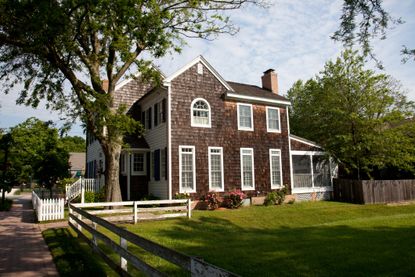
Property taxes in Delaware
Assessment limit: No
Rate limit: Yes
Levy limit: Yes
Median property tax bill: $1,570
Many Delaware homeowners will soon see their property tax bills increase due to new legislation that requires property assessments at least once every five years. Additionally, the new law mandates that tax assessments be based on “present fair market value.” This law may be especially concerning to Delaware residents since the state doesn't have a property assessment cap.
Delaware's new property tax assessment law is already effective, but the date when the five-year reassessment period begins varies by county. Homeowners should check with the county in which their property is located to see when the home will be reassessed.
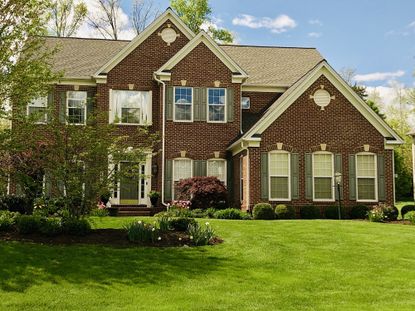
Cap on property tax increase in DC
Assessment limit: Yes
Rate limit: Yes
Levy limit: No
Median property tax bill: $3,641
Property tax bills in the District of Columbia are higher than in most other states. This is largely due to high median home values, which exceed $600,000. However, a property tax cap credit can help keep tax bills from increasing as much as they would otherwise.
The assessment tax cap limits eligible homeowners from being taxed on more than a 10% increase in their property’s assessed value (compared to the previous assessment period). The senior assessment cap on real property in the District of Columbia is 2%.

Assessment cap in Florida
Assessment limit: Yes
Rate limit: Yes
Levy limit: No
Median property tax bill: $2,143
Assessments caps in Florida are more generous for homestead properties than they are for non-homestead properties (homestead properties are owner-occupied primary residences). Save Our Homes (SOH), an amendment to Florida's state constitution, mandates that assessments on homestead properties will not increase more than 3% from the previous assessment period.
The assessment cap for non-homestead properties in Florida is 10%. This means that investment properties and homeowners who live out of state are subject to the 10% property tax cap.

What is the property tax rate in Georgia?
Assessment limit: Yes
Rate limit: Yes
Levy limit: No
Median property tax bill: $1,850
Property tax bills are more reasonable in Georgia than in many other states, with a median annual tax bill of $1,850 and an effective average property tax rate below 1%. School tax exemptions offered to eligible retirees may also help reduce tax bills. However, income limits apply, and not all retired homeowners in the state qualify for this type of exemption.

Why is property tax so high in Hawaii?
Assessment limit: Yes
Rate limit: No
Levy limit: No
Median property tax bill: $1,893
The median property tax bill of $1,893 in Hawaii is low considering median home values exceed $650,000. At least part of the reason for these lower tax bills is Hawaii’s property tax assessment cap of 3%. However, there are limitations, including how long your property has been classified as a homestead and if the property has undergone “characteristic changes.”

Idaho property tax
Assessment limit: No
Rate limit: Yes
Levy limit: Yes
Median property tax bill: $1,682
Idaho limits how much local governments can increase property tax budgets to 3%. This may help keep property tax bills from skyrocketing too quickly, but the 3% limit can be overridden. According to the Idaho State Tax Commission, this 3% cap can increase with voter approval or when taxing districts take on special projects, such as construction.
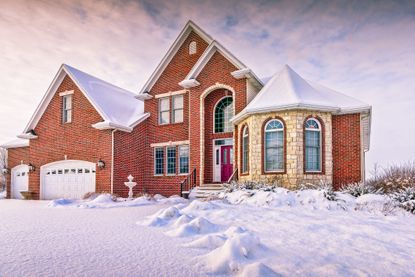
Illinois has a property tax cap
Assessment limit: No
Rate limit: Yes
Levy limit: Yes
Median property tax bill: $4,744
Property taxes can increase with inflation in Illinois, but the state has a 5% property tax cap in place to keep property taxes from rising too much during periods of high inflation. Even so, property tax bills in Illinois are far above average, with a median tax bill of $4,744 and an average effective property tax rate of 2.23%.

Property tax rate for Indiana
Assessment limit: No
Rate limit: Yes
Levy limit: Yes
Median property tax bill: $1,308
Indiana residents experience generally lower property tax bills than Illinois residents, even though both states impose the same types of property tax caps (rate and levy limits). However, the tax cap in Indiana is much more generous.
- 1% cap of property values for homestead properties
- 2% cap for other residential property and farmland
- 3% cap for other property types

How much can property tax increase in Iowa?
Assessment limit: Yes
Rate limit: Yes
Levy limit: Yes
Median property tax bill: $2,522
In Iowa, property assessments are limited to a 3% increase in growth from the previous assessment period. This 3% property tax assessment cap applies to total assessments in the state rather than for each homeowner’s property. That means that individual property tax assessments may exceed 3%.

Property tax increase limit in Kansas
Assessment limit: No
Rate limit: No
Levy limit: Yes
Median property tax bill: $2,355
The median property tax bill is slightly less in Kansas than in Iowa, despite the state only imposing one type of property tax cap. The median home values in Kansas and Iowa are also similar.
However, Kansas offers a property tax exemption of up to $40,000, which is much more generous than Iowa’s 2023 homestead exemption of $3,250. This higher property tax exemption helps explain why Kansas homeowners might face lower property tax bills than homeowners in some states with more tax caps.

Property taxes in Kentucky
Assessment limit: No
Rate limit: Yes
Levy limit: Yes
Median property tax bill: $1,320
Property taxes in Kentucky are low when compared to most other states. While property taxes have increased in many states, Kentucky’s property tax rate has decreased for the third consecutive year, according to the Jefferson County website. As of July 2023, the property tax rate in Kentucky is 11.4 cents per $100 of assessed value, which is 0.01 less than in 2022.

Annual property tax in Louisiana
Assessment limit: No
Rate limit: Yes
Levy limit: Yes
Median property tax bill: $983
Louisiana is ranked by Kiplinger as one of the best states for middle-class families, largely due to the state’s overall low property tax bills. Rate and levy limits play a role in keeping property taxes low, but the state also offers a homestead exemption of up to $7,500. The median home value in Louisiana is also lower than in most states. All of these factors contribute to lower tax burdens for Louisiana homeowners.

Maine property tax levy limit
Assessment limit: No
Rate limit: No
Levy limit: Yes
Median property tax bill: $2,722
Property tax bills are high in Maine compared to most states, and Maine only imposes one type of property tax cap. To make matters worse, Maine’s property tax stabilization program was repealed in July. That means that many homeowners in the state will see an increase in property tax bills in 2024.

Property taxes in Maryland
Assessment limit: Yes
Rate limit: No
Levy limit: No
Median property tax bill: $3,633
Maryland’s homestead tax credit limits an increase in tax assessed property to 10%. The amount over 10% is automatically applied to homeowners’ property tax bills. Homeowners must meet certain criteria to qualify for this property tax credit. However, Maryland residents only need to submit one application for the program during the time at the property.
Note: Local governments in Maryland may set tax caps below 10% for their portion of property taxes. Marylanders should check with their local tax jurisdictions for assessment limit information.

What is the levy limit in Massachusetts?
Assessment limit: No
Rate limit: Yes
Levy limit: Yes
Median property tax bill: $5,091
Median property tax bills in Massachusetts are among the highest in the nation, at $5,091. That’s due in part to generally high home values and the absence of an assessment limit in the state.
While Massachusetts has a local levy limit of 2.5%, local governments can increase that tax cap under some circumstances, such as to fund specific projects.

The most your property taxes can increase in Michigan
Assessment limit: Yes
Rate limit: Yes
Levy limit: Yes
Median property tax bill: $2,551
Despite the state imposing all three types of property tax caps, median property tax bills are higher for Michigan residents than they are for homeowners in many other states. And property tax bills could become even higher due to inflation. That’s because the assessment cap in Maryland is 5% or the rate of inflation, whichever is less, and the rate of inflation has exceeded 5%.
New homeowners may not be subject to Michigan’s 5% tax cap. Transferring ownership can “uncap” a property’s tax assessed value. When this happens, the property will be assessed at the same level as the year following the sale.

Minnesota tax changes
Assessment limit: No
Rate limit: No
Levy limit: Yes
Median property tax bill: $2,767
Minnesota only imposes a levy limit, but some homeowners are eligible for a special property tax refund (different from the regular property tax refund) if property taxes increase by at least 6%. To qualify for the special refund in 2023, Minnesota homeowners must meet certain criteria.
- Homeowners must have owned and lived at the property on January 2, 2022 and on January 2, 2023.
- The net property tax must have increased by at least $100.
- The increase in your tax bill cannot be due to changes made to the property.

The most property taxes can increase in Mississippi
Assessment limit: No
Rate limit: No
Levy limit: Yes
Median property tax bill: $1,052
In Mississippi, local governments cannot levy property taxes that result in more than a 10% increase in revenue for that jurisdiction. However, this doesn’t mean that an individual's property tax bill in Mississippi cannot increase more than 10%. In the event that the tax levy exceeds 10%, the additional revenue is used to reduce property tax bills during the next taxing cycle.

Property tax law in Missouri
Assessment limit: No
Rate limit: Yes
Levy limit: Yes
Median property tax bill: $1,676
Missouri is another state where inflation can drive property taxes up. However, a newly enacted law will allow some homeowners to freeze their property taxes, meaning that bills won’t go up just because of market conditions. Missouri residents 65 and older who own their homes may qualify. This is good news considering the state doesn't have a property tax assessment limit.

Property tax increase limit in Montana
Assessment limit: No
Rate limit: Yes
Levy limit: Yes
Median property tax bill: $2,189
Montana is another state with no property tax assessment limit. This means that property taxes rise with tight market conditions. However, there is some relief available to homeowners.
Eligible residents may receive two separate Montana property tax rebates of up to $650. One is for property taxes paid in 2022, and the other rebate is for taxes paid in 2024. Montana has already started sending the first round of payments.

Property taxes in Nebraska
Assessment limit: No
Rate limit: Yes
Levy limit: Yes
Median property tax bill: $2,916
As part of a Nebraska tax cut package passed in 2023, school districts are limited to increasing property tax requests above 3%. The legislation also removes the previous 5% levy limit imposed on school districts in Nebraska and increases the amount of relief provided by the Property Tax Credit Act.

Max property tax increase in Nevada
Assessment limit: No
Rate limit: Yes
Levy limit: Yes
Median property tax bill: $1,736
Nevada is rated by Kiplinger as one of the most tax-friendly states for retirees, due in part to reasonable property tax bills when compared with other states. Property tax caps in Nevada help keep tax bills more manageable.
- Nevada has a 3% tax cap on owner-occupied residential properties.
- There is an 8% tax cap on non owner-occupied properties.

Does New Hampshire have high property taxes?
Assessment limit: No
Rate limit: No
Levy limit: No
Median property tax bill: $6,036
New Hampshire homeowners face some of the highest property tax bills in the state. That’s partly because there are no property tax caps in the Granite State. However, generally high home values also play a role, especially during periods of tight real estate market conditions.
New Hampshire does offer some types of property tax relief to eligible residents. However, income limits may apply.

Property tax in New Jersey
Assessment limit: No
Rate limit: No
Levy limit: Yes
Median property tax bill: $8,797
At more than $8,500, New Jersey has the highest property taxes in the country. There is no assessment limit in the state, which can be challenging given today’s rising home prices. The median home value in New Jersey is more than $350,000, and unfortunately, the Garden State doesn’t have a rate limit either.

How much can property tax increase in New Mexico?
Assessment limit: Yes
Rate limit: Yes
Levy limit: Yes
Median property tax bill: $1,470
Property taxes in New Mexico are lower than in many other states, due in part to the state imposing three types of property tax caps. The assessment limit in New Mexico can be beneficial, given rising home values.
Additionally, counties in the state may grant property tax rebates to eligible homeowners. However, strict income limits apply.

New York state tax cap for 2023
Assessment limit: Yes
Rate limit: No
Levy limit: Yes
Median property tax bill: $5,884
New York’s property taxes are already among the highest in the country, and property taxes are increasing in the state. That’s because New York’s property tax cap is based on the increase in the consumer price index (CPI) or 2%, whichever is less. Inflation has caused property taxes to increase to the highest amount allowed by New York law, since the rate of inflation has surpassed 2%.

Property tax increase in North Carolina
Assessment limit: No
Rate limit: Yes
Levy limit: No
Median property tax bill: $1,583
Despite not imposing a property tax assessment cap, tax bills on real property in North Carolina are below average. That’s partly due to the state’s property tax rate limit of 1.5%. However, local jurisdictions (such as schools and jails) may tax property at a higher rate. The property tax rate cap in North Carolina can also be increased with voter approval.

Property taxes in North Dakota
Assessment limit: No
Rate limit: Yes
Levy limit: Yes
Median property tax bill: $2,092
North Dakota’s property taxes are reasonable when compared to most other states. There is no property tax assessment limit in North Dakota, but the state imposes rate and levy limits that may help keep property taxes from increasing too much due to current market conditions.
For example, rising tax assessments lead to increased property tax bills, which provides additional revenue for local governments. However, a levy limit restricts how much more revenue a taxing jurisdiction can receive. So, counties in the Peace Garden State may be forced to reduce taxes.

Cap on property tax increase in Ohio
Assessment limit: No
Rate limit: Yes
Levy limit: Yes
Median property tax bill: $2,447
In Ohio, the property tax cap doesn’t allow property taxes to exceed 1% of a property’s taxable value. This tax rate limitation helps keep property taxes more reasonable in Ohio, especially considering the Buckeye State doesn't have an assessment limit.
The property tax rate is higher than 1% in some parts of Ohio. That’s because voters can approve a rate hike in their jurisdiction, such as to fund special projects.

What is the maximum property tax increase in Oklahoma?
Assessment limit: Yes
Rate limit: Yes
Levy limit: No
Median property tax bill: $1,351
The median property tax bill in Oklahoma is lower than in most other states, at $1,351. That’s partly due to the assessment limit in the state. The taxable fair cash value for homestead properties is capped at a 3% increase in Oklahoma. Most other real property is capped at a 5% increase in taxable fair cash value.

Is there a cap on property tax in Oregon?
Assessment limit: Yes
Rate limit: Yes
Levy limit: No
Median property tax bill: $3,352
Property taxes are on the high side in Oregon. High home values contribute to more costly tax bills, despite the state imposing an assessment limit. Tax assessed value typically doesn’t increase more than 3% from the previous year. However, Oregon voters can approve an increase to this cap.
The 3% cap doesn’t mean that property taxes cannot increase more than 3% in Oregon. There are many reasons tax bills can increase, including (but not limited to) renovations to the property

Is there a cap on property tax increases in Pennsylvania?
Assessment limit: No
Rate limit: Yes
Levy limit: Yes
Median property tax bill: $3,022
Pennsylvania doesn't have an assessment limit, which likely contributes to the Commonwealth’s higher-than-average tax bills. However, property tax relief is available to some homeowners. Recently passed legislation expands the Property Tax and Renter’s Pennsylvania rebate program. The program’s expansion increases income limits and rebate amounts to eligible residents.

Property tax rate in Rhode Island
Assessment limit: No
Rate limit: No
Levy limit: Yes
Median property tax bill: $4,483
Rhode Island only imposes a property tax levy limit. The lack of other types of property tax caps likely contributes to the state’s generally high property tax bills, especially considering Rhode Island’s median home value is higher than in most other states.
Rhode Island does offer a homestead exemption. For 2023, the exemption is 5% of the property’s assessed value. So, exemption amounts can vary greatly from homeowner to homeowner.

Is there a cap on property tax in South Carolina?
Assessment limit: Yes
Rate limit: Yes
Levy limit: No
Median property tax bill: $1,024
The median property tax bill in South Carolina is well below the national average. The state’s assessment and rate limits can help keep property taxes low without restricting how much revenue local governments in South Carolina can gain from property taxes paid.
Property tax assessments are typically capped at 15% growth within a five-year period. However, this cap does not apply if the assessment increase is a result of renovations. Additionally, the cap may not apply to the first year the property is transferred to a new owner.

How high are property taxes in South Dakota?
Assessment limit: No
Rate limit: Yes
Levy limit: Yes
Median property tax bill: $2,331
There is no assessment limit in South Dakota, which contributes to higher tax bills compared to many other states with a similar median home value. However, the state does have a levy limit that may help keep property tax bills from climbing even further.
The levy limit doesn’t allow local governments in South Dakota to increase property tax budgets by more than 3%. However, this doesn't mean a homeowner’s tax bill won't increase more than 3%.

No property tax cap in Tennessee
Assessment limit: No
Rate limit: No
Levy limit: No
Median property tax bill: $1,270
Tennessee law does not dictate a property tax cap, but the median property tax bill in the state is still well below the U.S. average. Low property tax bills in Tennessee can result from a number of factors, such as property tax freezes and exemptions offered to eligible homeowners. Lower home values in the Volunteer State may also be a contributing factor. Additionally, property tax bills may be significantly higher in some parts of Tennessee, such as Shelby and Williamson counties.

Property tax assessment cap in Texas
Assessment limit: Yes
Rate limit: Yes
Levy limit: Yes
Median property tax bill: $3,520
The median property tax bill in Texas is higher than in most other states, even though Texas imposes all three types of property tax caps. A recently passed Texas property tax relief package may help lower tax bills in Texas next year.
One major highlight of the legislation is an increased homestead exemption from $40,000 to $100,000 ($110,000 for homeowners 65 and older and those with disabilities). The property tax relief measure is expected to be approved by voters in November.

Is there a cap on property tax increases in Utah?
Assessment limit: No
Rate limit: Yes
Levy limit: Yes
Median property tax bill: $1,967
There is no property tax assessment cap in Utah, but the median tax bill is still reasonable compared with most other states. Unlike most states with levy limits, local governments in Utah must not increase their property tax revenue at all without holding a public hearing. Additionally, most homeowners in Utah pay property taxes on 55% of their home’s fair market value, which is less than in many states.

How high is property tax in Vermont?
Assessment limit: No
Rate limit: No
Levy limit: No
Median property tax bill: $4,570
Vermont doesn’t have a property tax cap, which contributes to the high median tax bill of $4,570. This number is higher than the median tax bills in most states, including California. Home values in Vermont are also higher than in many other states, which is also part of the reason for the state’s high property tax burden.

Property tax rate for Virginia
Assessment limit: No
Rate limit: No
Levy limit: Yes
Median property tax bill: $2,420
Virginia doesn’t have an assessment limit, which is bad news, considering the median home value in the Commonwealth is more than the national average. According to the Fairfax County Government, residential home assessments in the area have increased 6.97% between 2022 and 2023. So, the median property tax bill of $2,420 could climb significantly higher in Virginia.

Property tax in Washington state
Assessment limit: No
Rate limit: Yes
Levy limit: Yes
Median property tax bill: $3,752
Washington residents typically experience higher property tax bills. The state’s higher-than-average home values and the absence of an assessment limit contribute to the high tax burden for residents. However, there are some state property tax breaks offered to eligible homeowners in Washington age 57 or older and to individuals with disabilities.
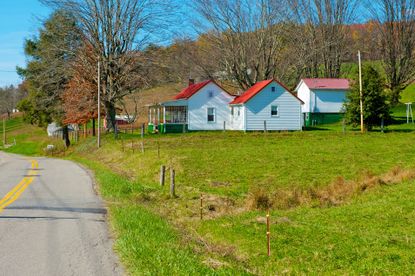
How much are property taxes in West Virginia?
Assessment limit: No
Rate limit: Yes
Levy limit: Yes
Median property tax bill: $756
Property tax bills are well below average in West Virginia, despite the state offering the same types of property tax caps as Washington state. Lower home values (approximately three times lower than in Washington) help keep property taxes well below average in West Virginia.
Levy limits in West Virginia can be increased under special circumstances, but most limits can only increase 50% over five years. School tax levy limits can increase up to 100%.

Levy limits in Wisconsin
Assessment limit: No
Rate limit: No
Levy limit: Yes
Median property tax bill: $3,472
Wisconsin only imposes a levy limit, which may contribute to the state’s high median property tax bill of $3,472. However, the levy limit in Wisconsin has the potential to help prevent homeowners from paying more fees than necessary. That’s because local governments in Wisconsin must add new fees to their levy limits, which decreases the total amount of property tax revenue they can collect.

Property tax in Wyoming
Assessment limit: No
Rate limit: Yes
Levy limit: No
Median property tax bill: $1,442
Wyoming only imposes a rate limit, but the median property tax bill in the state is low compared to the U.S. average. A significant contributing factor to Wyoming’s below-average property tax bills is the assessment rate.
Residential and commercial properties are only taxed at 9.5% of the value of the property. That’s far lower than in most other states. Industrial properties are taxed at a slightly higher assessment level of 11.5%, but that is still far below average.
Related Content

Katelyn has more than 6 years’ experience working in tax and finance. While she specializes in tax content, Katelyn has also written for digital publications on topics including insurance, retirement and financial planning and has had financial advice commissioned by national print publications. She believes that knowledge is the key to success and enjoys helping others reach their goals by providing content that educates and informs.
-
 Charitable Remainder Trust: The Stretch IRA Alternative
Charitable Remainder Trust: The Stretch IRA AlternativeThe SECURE Act killed the stretch IRA, but a properly constructed charitable remainder trust can deliver similar benefits, with some caveats.
By Brandon Mather, CFP®, CEPA, ChFEBC® Published
-
 Three Ways to Take Control of Your Money During Financial Literacy Month
Three Ways to Take Control of Your Money During Financial Literacy MonthBudgeting, building an emergency fund and taking advantage of a multitude of workplace benefits can get you on track and keep you there.
By Craig Rubino Published
